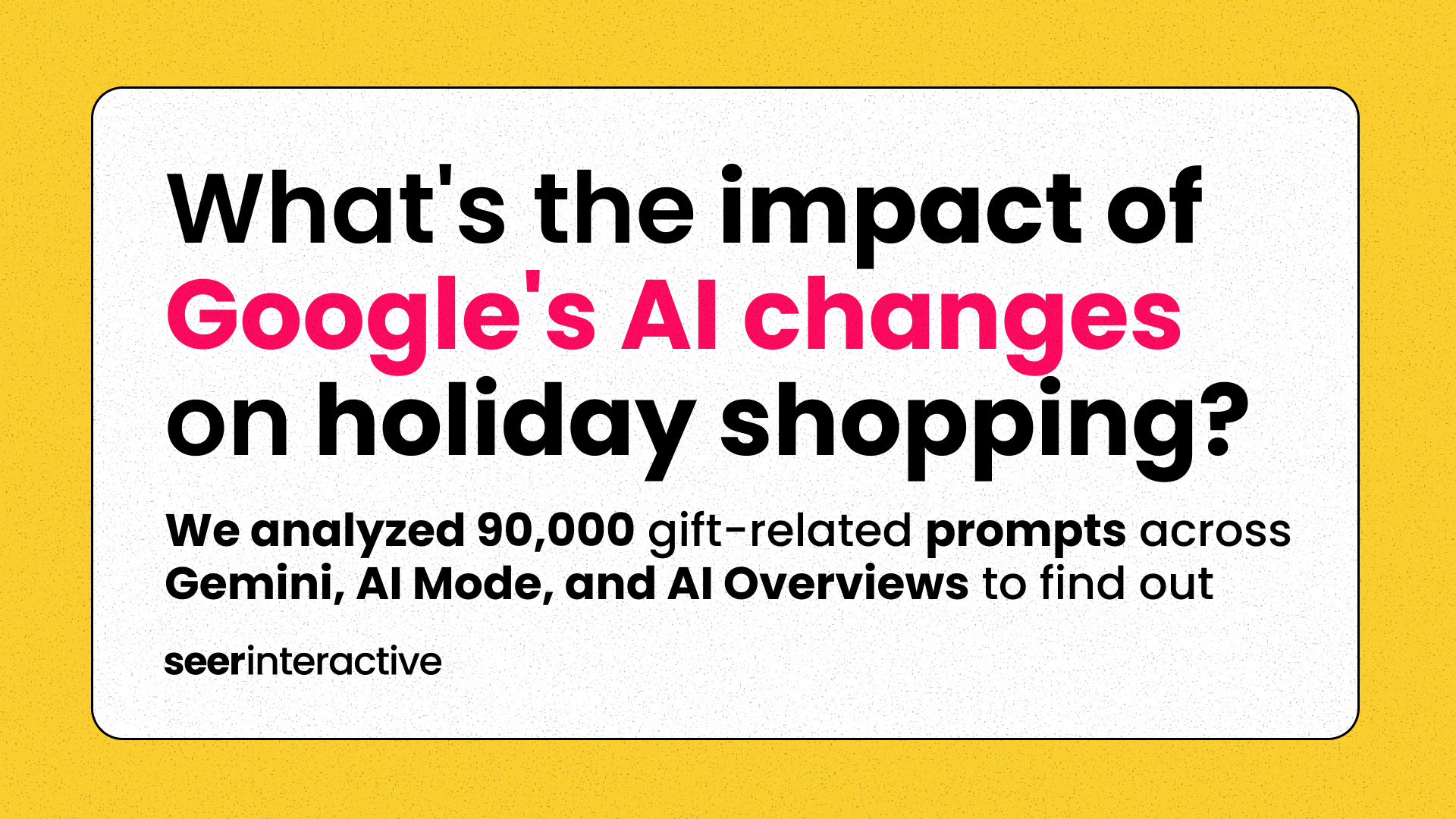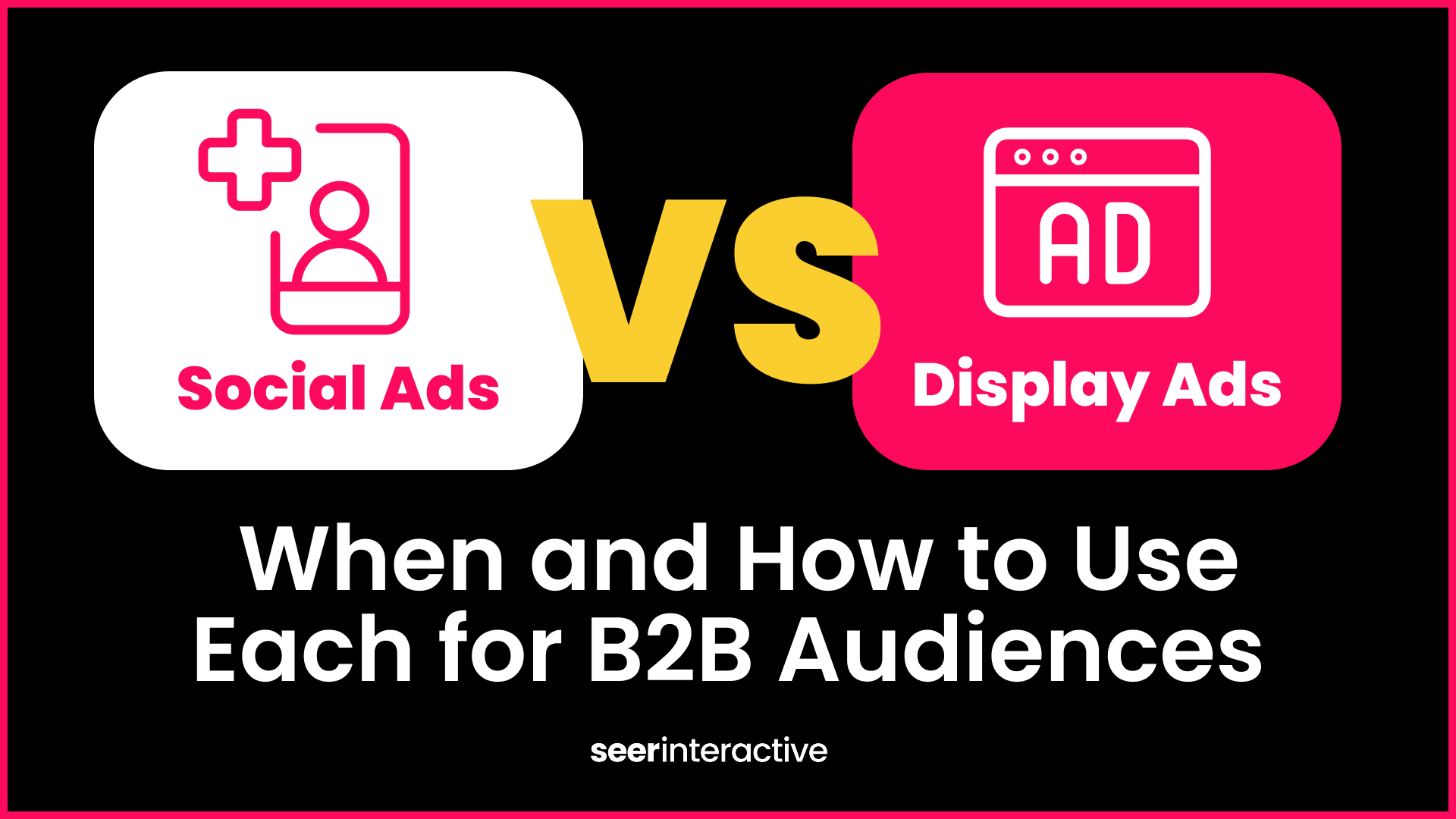In this blog, we're breaking down the distinctions between lead generation from e-commerce digital experiences in Google’s Demand Gen campaigns. Whether you're focused on generating leads or selling products online, the challenges and victories are as varied as our Spotify playlists.
Let's get real – discussions around Google’s Demand Gen campaigns are a rollercoaster, and the performance divide between lead generation and e-commerce businesses is a separate ride of its own.
Buckle up, because this ride is about to start and we're about to head straight into a pulse-pounding world where strategy meets data.
What is Google Discover?
Discover is a feed that appears on the home page of Google’s iOS and Android app, as well as the mobile Google.com homepage.
Users are able to personalize their feeds so they see content that pertains to them. Unlike Google Search Ads, people don’t need to enter a search query to have these ads appear. Google sorts users into audiences based on activity and serves ads relevant to that person.
What are Google Discovery Ads?
Discovery Ads are visually rich, mobile-optimized clickable image ads that use the power of user intent. These ads are based on Google’s signals from peoples’ website visits, app downloads, videos watched, and map searches.
Discovery Ads are targeted using audiences rather than keywords (similar to In-Market Audiences) and can be run across the mobile YouTube home feed and Gmail Social & Promotions tabs in addition to the Google Discover feed.
What are Google Demand Gen campaigns?
For one, they are similar to Google Discovery in that they reach new audiences across YouTube, Gmail and the Google Discovery Feed all in one campaign. But the new campaign-type has a couple unique upgrades and features.
Google Discovery campaigns are transitioning to Demand Gen, heralding a new era of advertising capabilities. This shift brings enhancements such as new features, expanded inventory, deeper insights, and a streamlined ad creation process. The upgrade began in early 2024, ensuring that advertisers have access to the best tools for engaging their audience.
What’s the difference between Google Ads Demand Gen Campaigns vs. Google Discovery Ads?
Source: Google
- Expanded Reach: Google Discovery Ads reach users across Discovery Feed, Gmail, and parts of YouTube, but miss the potential within YouTube's vast video content. Demand Gen campaigns include YouTube In-Stream and Shorts, significantly amplify reach across YouTube.
- New Ad Creative, Experiments and Tools: While Google Discovery Ads allow product or custom image ads, Demand Gen ad types also include short form videos, carousels, portraits and square images. Advertisers can conduct A/B experiments to optimize image and video creatives, enhancing performance.
[TIP] Google's Demand Gen campaigns also introduce a dedicated ad preview tool, offering a preview of creatives across screens and placements.
- Additional Bidding Options: Demand Gen campaigns offer smart-bidding options, including "maximize clicks," suitable for advertisers with longer conversion paths or aiming to drive website traffic. This complements existing options like "maximize conversions" and "maximize conversion value."
- More Reporting Options: Beyond driving direct actions and conversions, Demand Gen campaigns provide insights into Brand Lift, Search Lift, and Conversion Lift through specialized reports, offering a comprehensive view of campaign impact.
- New Audience Targeting: With the sunset of Similar Audiences, Demand Gen campaigns introduce lookalike audience segments, allowing advertisers to target narrow, balanced, or broad audiences based on the characteristics and behaviors of their existing first-party audience segments. This feature resembles lookalike audiences on other social platforms like Facebook.
Now that you know about Demand Gen campaigns and all the amazing new features it has-you’re probably thinking “how am I supposed to incorporate it into my current strategy?”
Real World Wins: How Demand Gen Campaigns Perform
Let's take a look at how Demand Gen performed for two different clients, Client A being lead generation focused and Client B being ecommerce focused.
Let's start with Client A: Lead Gen Focused Client
Utilizing all of these new features that Demand Gen Offers let's dig into how it turned out.
Daily Budget: ~$2k/day
KPI’s: CPL and Lead Volume
Two weeks into launching Demand Gen and we were already impressed with performance. Engagement soared by a solid 18%, and the Conversion Rate (CVR) shot up an impressive 72%. We found that the new creative types resonated with our users and we were able to drive roughly 600 leads at an efficient CPL under $30 - well below our CPL goal of $100. Can't argue with those numbers!
Now For Client B: eCommerce Focused Client
Looking at Client B we can see how Demand Gen performance can differ depending on what goals you are focused on.
Daily Budget: ~ $347/day
KPIs: Conversion Volume and Conversion Rate
While overall performance wasn’t necessarily poor, it wasn’t what we anticipated for this particular client. The Demand Gen campaign ran for about six weeks and contributed very little to overall account performance generating only 43 in engine conversions at a CVR of only .11%. Overall traffic was also lower than we had originally anticipated with the end result being a click through rate of .54%.
As is true when testing any new Google Ads feature, results may vary.
Breaking Down the Performance: Analyzing Demand Gen Differences
It is important to note that there are a number of factors that could have influenced Demand Gen campaign performance between these two different clients. When comparing performance for both the eCommerce and Lead Gen campaigns we need to focus on what happened, why it happened, and what we can learn from both cases.
- Industry Nuances: As seen when looking at Client A vs Client B it is important to consider your business goals when you are recommending testing a Demand Gen campaign. When focusing on generating leads, Demand Gen has proven to be a fantastic resource for driving engagement.
- Customer Journey Variations: Different industries produce different consumer behavior and different customer journeys. In order to determine if Demand Gen would benefit your business, think about the different placement being utilized and if they align with your consumers typical behavior.
- Seasonal Trends: Depending on how your business operates it is important to factor seasonality into Demand Gen planning/preparation. If you are preparing for a busy season then testing a Demand Gen campaign to expand your reach and gather more leads might be a viable option.
Why Demand Gen Campaigns are a Game Changer
In conclusion, Demand Gen campaigns offer numerous benefits, such as first-person look-alike data, diverse ad formats, and cross-platform reach. However, success hinges on customizing strategies based on goals and industry nuances. Adaptability is key to realizing the full potential of Demand Gen campaigns and navigating changes during their run.
Looking for help getting started? Our Paid Media Team is ready to help!



